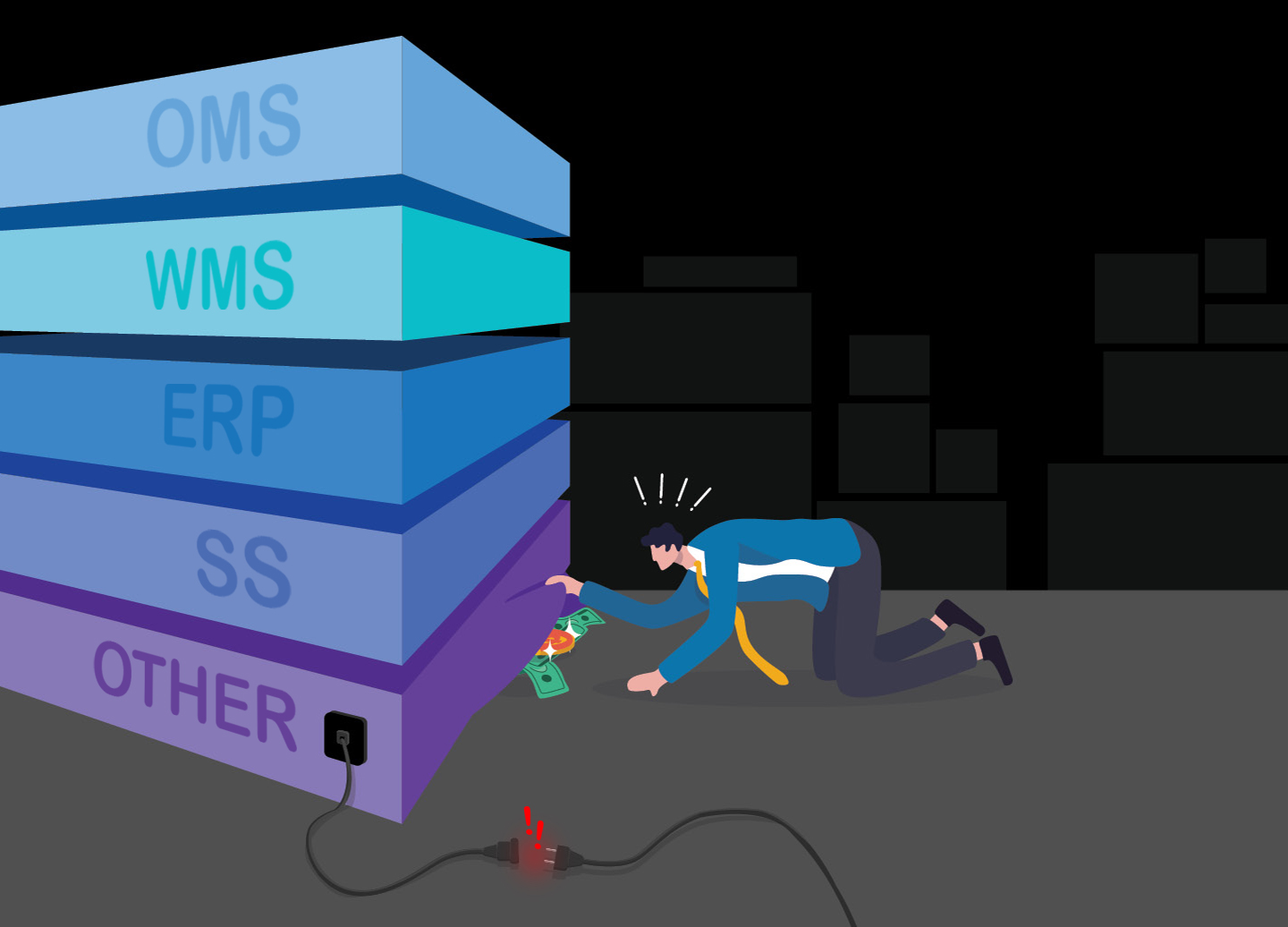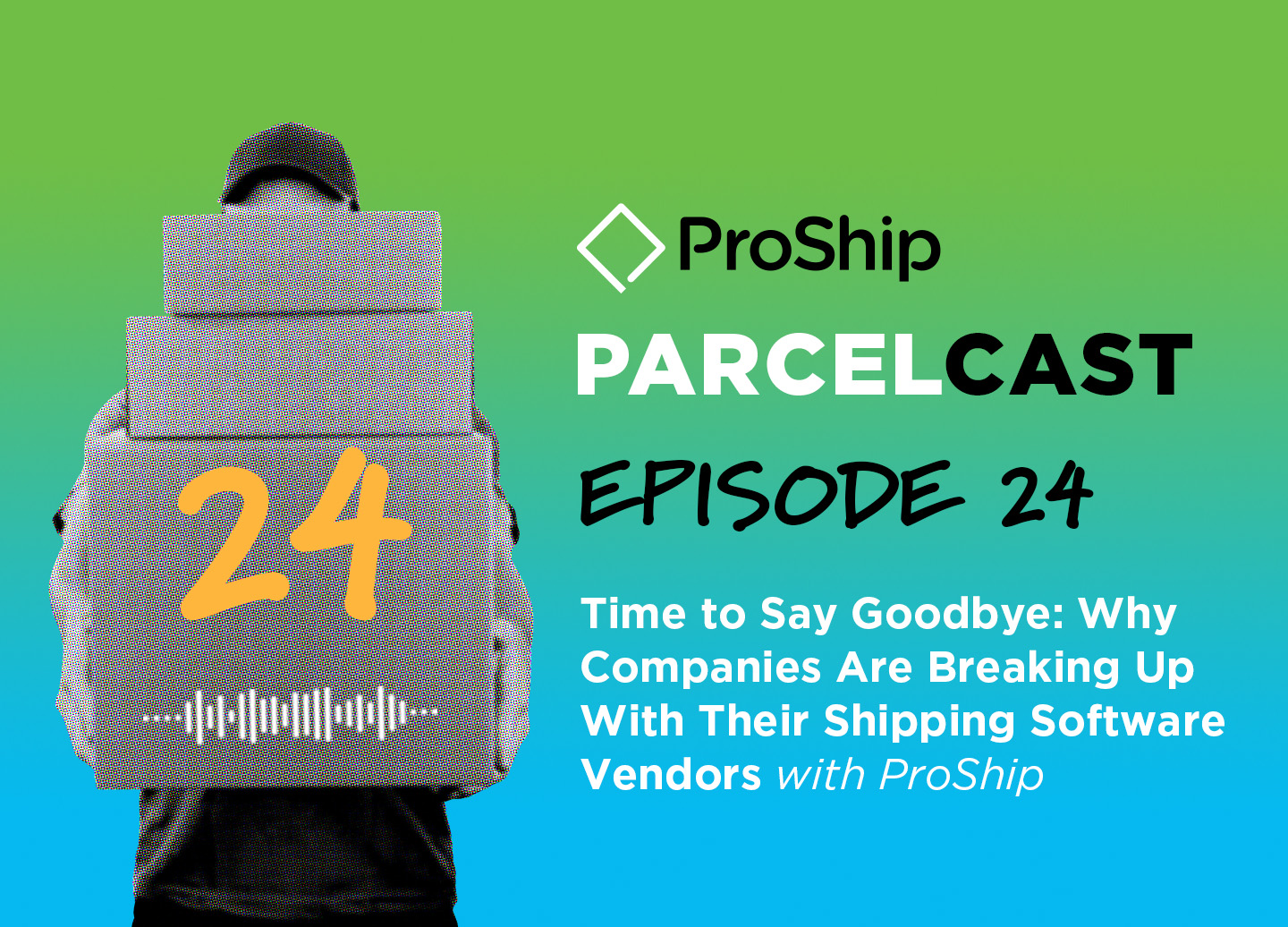Discover how a disconnected tech stack can drain your supply chain budget
“Technology is nothing. What’s important is that you have faith in people, that they’re basically good and smart — and if you give them tools, they’ll do wonderful things with them.”
– Steve Jobs
We all know what Steve Jobs meant by “the right tools,” right? This is why it’s recommended that you have a well-integrated Enterprise Software Stack (ESS)! Disconnected systems can leave even the smartest people feeling frustrated and powerless.
So, what happens when the platforms you utilize to get packages out the door are poorly cobbled together? Without the right technology tools, data entry errors multiply as information gets manually re-keyed between systems, leading to inaccurate inventory levels and missed shipments. Disconnected software can’t compare rates across multiple carriers, so you might be missing out on cost-saving opportunities.
These are just a few of the hidden costs associated with a disconnected ESS. The good news is that a highly integrated shipping platform exists: multi-carrier shipping software. When this powerful shipping solution is seamlessly integrated with your supply chain tech stack, it empowers businesses to streamline workflows, unlock hidden efficiencies, and leverage the best rates and services from various shipping carriers.
The High Price of Disconnection in Your Enterprise Software Stack
In today’s competitive e-commerce environment, efficient shipping processes are crucial for customer satisfaction and business growth. Unfortunately, many companies struggle with managing these software systems.
Outside of multi-carrier shipping software, these supply chain technologies often include Order Management Systems (OMS), Warehouse Management Systems (WMS), and Enterprise Resource Planning (ERP) systems. The difficulty arises when these systems aren’t communicating with each other effectively. If your OMS, WMS and ERP are operating independently, data silos are created, hindering communication between crucial parts of your business. This lack of integration leads to several problems that can significantly impact your bottom line.
The Challenges of Disconnected Systems
Manual data entry delays: Disconnected systems often require repetitive manual data entry across various processes, such as customer information, order details, and shipping weights. This happens because data can’t flow seamlessly between your OMS, WMS, and shipping software. This not only slows down operations but also increases the risk of errors. Data errors can lead to incorrect fulfillment, delayed shipments, and ultimately, frustrated customers.
Inventory accuracy issues: Disconnected inventory management and order fulfillment systems can create inaccurate stock levels. This can result in major problems including out-of-stock items that cause delays and lost sales and overstocking that ties up valuable budget and increases storage costs.
Delayed shipment problems: When your order processing system doesn’t communicate with your shipping solution, delays become a recurring issue. Orders get stuck in limbo, missing promised delivery deadlines (estimated delivery date or EDD) and causing customer dissatisfaction.
Carrier management complexities: Negotiating carrier contracts and managing shipping rates becomes a complex task without a central data source. Disconnected systems make it difficult to compare rates across various carriers, making it hard to choose the most cost-effective option. [Learn more about the different types of rate shopping]
Limited supply chain visibility: A fragmented software stack creates blind spots in your supply chain. Without a complete view of inventory levels, order status, and shipping performance, it’s difficult to identify bottlenecks and optimize processes. This can lead to inefficiencies and missed opportunities for improvement.
The Power of Integration: Multi-Carrier Shipping Software
Disconnected software systems create traffic jams and slow down your shipping operation. Multi-carrier shipping software bridges the gap between your OMS, WMS, and other critical systems. This integration unlocks a new level of efficiency by:
Eliminating manual data entry: Multi-carrier shipping software connects directly to your existing systems. [Elite solutions do this seamlessly and with leading technology partners.] This eliminates the need to manually re-enter data across different stages of shipping, like order details, weights, and customer information. Automation reduces errors and saves valuable time for your team.
Optimizing carrier selection: The multi-carrier shipping solution connects to a wide range of carriers, providing real-time access to their carrier service options. You can easily compare shipping costs, delivery speeds, and service levels for each shipment, which empowers you to choose the most cost-effective carrier and the best shipping rate that meets your specific needs for each order (all within one platform).
Gaining real-time visibility: Get a central view of all your shipping activity to proactively identify potential delays and keep your customers informed. Integration ensures all shipment information flows seamlessly, keeping everything readily available in one place.
Boosting efficiency: Disconnected systems create inefficiencies and inconsistencies throughout the shipping process. Eliminate these discrepancies by automating workflows with multi-carrier shipping software, ensuring seamless information flow and data consistency from order processing to shipment. This leads to faster fulfillment times and a more efficient overall shipping operation.
Making data-driven decisions: Integrated and centralized data from all your systems provides valuable insights into your shipping performance. Analyze trends, identify areas for cost savings, and optimize your carrier selection strategies based on real-time data. This allows you to make informed decisions that can significantly impact your bottom line.
Why Choose ProShip for Seamless Multi-Carrier Shipping?
Having explored the benefits of multi-carrier shipping software to your ESS, it only remains to be seen why ProShip is the ideal shipping solution. ProShip goes beyond basic integration, offering a comprehensive solution designed to streamline your entire shipping operation.
The key advantages ProShip provides:
- Seamless integration: ProShip boasts industry-leading integration capabilities, ensuring a smooth connection with your OMS, WMS, ERP, and other critical systems. [Explore How it Works]
- Extensive carrier network: Connect to a vast network of over 250 national, regional carriers, and final mile shipping carriers. These carriers provide unmatched flexibility and choice when selecting the most cost-effective option for each shipment. An additional benefit? ProShip is carrier-agnostic and won’t push unnecessary carriers your way if you don’t need them.
- Unmatched expertise & support: ProShip’s dedicated customer team provides ongoing support and industry expertise to help you get the most out of your multi-carrier shipping solution.
- Scalability for growth: ProShip’s scalable architecture ensures your multi-carrier shipping solution can adapt and grow alongside your business. Whether you’re shipping thousands of packages each day or millions, ProShip can handle your shipping volume with ease.
- Versionless architecture: ProShip utilizes a cutting-edge versionless architecture. This eliminates the need for disruptive software updates and ensures you always have access to the latest features and functionality.
Ready to unlock the power of seamless integration and transform your shipping operation?
Contact ProShip today for a no-pressure discovery call, and see how we can help you streamline your processes, reduce costs, and deliver an exceptional customer experience.

 Back to Blog
Back to Blog






